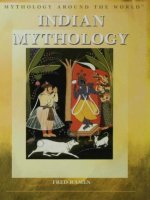homes around the world 1
Bạn đang xem bản rút gọn của tài liệu. Xem và tải ngay bản đầy đủ của tài liệu tại đây (4.5 MB, 36 trang )
READERS
MAX MOORE
READERS
A Day at Greenhill Farm
Truck Trouble
Tale of a Tadpole
Surprise Puppy!
Duckling Days
A Day at Seagull Beach
Whatever the Weather
Busy Buzzy Bee
Big Machines
Wild Baby Animals
A Bed for the Winter
Born to be a Butterfly
DinosaurÕs Day
Feeding Time
Diving Dolphin
Rockets and Spaceships
My CatÕs Secret
First Day at Gymnastics
A Trip to the Zoo
I Can Swim!
A Trip to the Library
A Trip to the Dentist
I Want to Be a Ballerina
Animal Hide and Seek
Submarines and Submersibles
Animals at Home
LetÕs Play Football
Homes Around the World
LEGO: Trouble at the Bridge
LEGO: Secret at Dolphin Bay
Star Wars: What is a Wookiee?
Star Wars: Ready, Set, Podrace!
Star Wars: Luke SkywalkerÕs
Amazing Story
Star Wars Clone Wars: Watch Out
for Jabba the Hutt!
Power Rangers Jungle Fury: We are
the Power Rangers
Level 1
Dinosaur Dinners
Firefighter!
Bugs! Bugs! Bugs!
Slinky, Scaly Snakes!
Animal Hospital
The Little Ballerina
Munching, Crunching, Sniffing
and Snooping
The Secret Life of Trees
Winking, Blinking, Wiggling
and Waggling
Astronaut: Living in Space
Twisters!
Holiday! Celebration Days
around the World
The Story of Pocahontas
Horse Show
Survivors: The Night the
Titanic Sank
Eruption! The Story of Volcanoes
The Story of Columbus
Journey of a Humpback Whale
Amazing Buildings
Feathers, Flippers and Feet
Outback Adventure: Australian
Holiday
Sniffles, Sneezes, Hiccups and
Coughs
LetÕs Go Riding
I Want to Be a Gymnast
Starry Sky
Earth Smart: How to Take
Care of the Environment
Water Everywhere
Telling the Time
A Trip to the Theatre
Journey of a Pioneer
LEGO: Castle Under Attack
LEGO: Rocket Rescue
Star Wars: Journey Through
Space
Star Wars: A QueenÕs Diary
Star Wars: R2-D2 and Friends
Star Wars Clone Wars: Anakin in
Action!
Spider-Man: Worst Enemies
X-Men: Meet the X-Men
Level 2
A Note to Parents and Teachers
DK READERS is a compelling reading programme for
children. The programme is designed in conjunction with
leading literacy experts, including Cliff Moon M.Ed., who
has spent many years as a teacher and teacher educator
specializing in reading. Cliff Moon has written more than
160 books for children and teachers. He is series editor to
Collins Big Cat.
Beautiful illustrations and superb full-colour photographs
combine with engaging, easy-to-read stories to offer a fresh
approach to each subject in the series. Each DK READER
is guaranteed to capture a childÕs interest while developing
his or her reading skills, general knowledge, and
love of reading.
The Þve levels of DK READERS are aimed at different
reading abilities, enabling you to choose the books that
are exactly right for your child:
Pre-level 1: Learning to read
Level 1: Beginning to read
Level 2: Beginning to read alone
Level 3: Reading alone
Level 4: ProÞcient readers
The ÒnormalÓ age at which a child begins
to read can be anywhere from three
to eight years old. Adult participation
through the lower levels is very helpful
for providing encouragement,
discussing storylines and
sounding out unfamiliar words.
No matter which level you
select, you can be sure that you
are helping your child learn to
read, then read to learn!
6aadi]Zg^bV\Zh9dga^c\@^cYZghaZn
;dg[jgi]Zg^c[dgbVi^dchZZ/lll#Y`^bV\Zh#Xdb
Treehouses 6
Mud-brick homes 8
Floating homes 12
Homes on stilts 14
Boat-shaped homes 18
Yurts 20
Straw homes 22
Igloos 24
Cave homes 26
Earth-friendly homes 28
Unusual homes 30
Glossary 32
Contents
Series Editor Deborah Lock
Art Editor Mary Sandberg
Managing Art Editor Rachael Foster
Production Editor Sean Daly
Production Claire Pearson
Picture Researcher Harriet Mills
Jacket Designer Natalie Godwin
Reading Consultant
Cliff Moon, M.Ed.
Published in Great Britain by
Dorling Kindersley Limited
80 Strand, London WC2R ORL
Copyright © 2009 Dorling Kindersley Limited
A Penguin Company
2 4 6 8 10 9 7 5 3 1
DD504 - 12/08
All rights reserved. No part of this publication may be reproduced,
stored in a retrieval system, or transmitted in any form or by
any means, electronic, mechanical, photocopying, recording,
or otherwise, without the prior written permission
of the copyright owner.
A CIP catalogue record for this book
is available from the British Library
ISBN: 978-1-40533-859-2
Colour reproduction by Colourscan, Singapore
Printed and bound in China by L. Rex Printing Co. Ltd.
The publisher would like to thank the following for their kind
permission to reproduce their photographs:
(Key: a=above; b=below/bottom; c=centre; l=left; r=right; t=top)
Alamy Images: John Angerson 28b; Paul Collis 8-9 (main image);
Danita Delimont 9tr, 12-13, 25tr, 32tl; Franck Fotos 31cr; JTB Photo
Communications, Inc/Haga Library 16-17; Tom Mackie 26-27; Jeff
Morgan alternative technology 23tr; Photofusion Picture Library 3c;
The Photolibrary Wales 10-11, 11tr, 32cla; Robert Harding Picture
Library Ltd 13tr; Henry Westheim Photography 14, 15tr. Corbis:
Jean Pierre Amet/Sygma 30; Bob Krist 20-21 (main image); Benedict
Luxmoore/Arcaid 29; Getty Images: Jeremy Horner/Riser 17t;
Photonica/Franco Zecchin 7bl, 32clb; Stuart Westmorland/Stone 24-25.
Imagestate: Goran Burenhult 18cl, 32cl. naturepl.com: Eric Baccega 6,
7, 35br; Constantinos Petrinos 18-19 (main image), 19tr. Robert Estall
Photo Library: Carol Beckwith & Angela Fisher 22 (main image).
Shutterstock: Clouston 21br, 32bl; Dana E. Fry 5; Andy Z. 4.
Still Pictures: K. Hennig 27
Jacket images: Front: Photolibrary: Franck Guiziou.
Back: Shutterstock: Clouston tr. naturepl.com: Eric Baccega tl.
LONDON, NEW YORK, MUNICH,
MELBOURNE,
AND DELHI
Discover more at
www.dk.com
Written by Max Moore
Homes
Around the World
A Dorling Kindersley Book
READERS
)
Most of us live in houses or flats.
*
But not all homes in the world
are like this.
Some people live in unusual
homes.
They are usually made of bricks
or concrete.
+
Would you like to live high
above the ground?
Some people in forests and
jungles build treehouses.
They use bamboo, vines and
wood from the forest to make
their homes.
,
treehouse
-
Suppose you went outside,
dug up some clay and
then built a house with it.
People in very hot places
can do this.
.
The sun dries
the clay into strong
adobe bricks.
adobe
&%
These cone-shaped, mud-brick
homes are called beehive houses.
Their tall, cone-shaped roofs
help to keep them cool inside.
&&
All the hot air
rises to the top
of the house.
beehive house
&'
What would it be like to live
on a lake?
Some people build their homes
on floating islands made of reeds.
&(
reeds
They add a layer of fresh reeds
every few months.
&)
Some fishermen build
wooden houses on stilts
over the water.
People walk along walkways
to get to shops, work and school.
&*
walkway
&+
Houses on stilts are also
sometimes built on land.
People walk up a ramp
to get into their homes.
Cows, pigs, horses and
chickens are kept under
their houses.
stilts
&,
ramp
&-
Would you like a house shaped
like a boat?
These wooden houses are
called tongkonans.
They are the homes of
the Toraja people.
tongkonan
&.
Some houses have many carvings
of plants and animals inside.
20
Have you ever moved to
a new house?
Some people move several times
every year.
21
They can fold up their houses and
set them up again somewhere else.
These houses are covered with
animal skins.
yurt
''
Straw tents can be moved, too.
Straw is a light material but it is
also strong and warm and doesnÕt
let water in.
'(
Straw can also be used to make
the walls of homes that donÕt
move.









